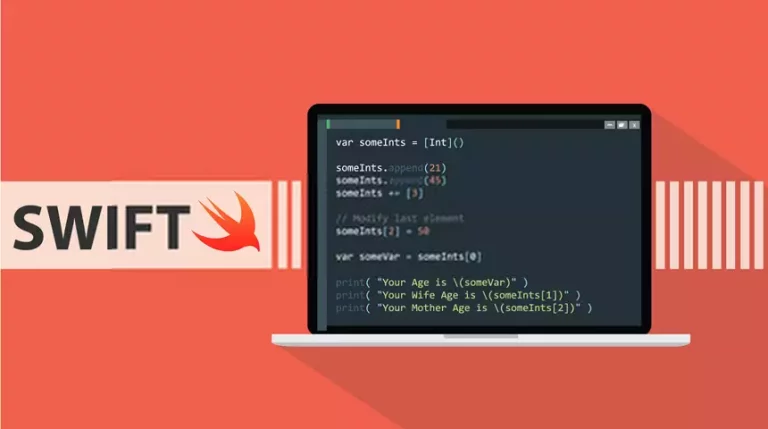Swift is a programming language developed by Apple Inc. in 2014, and has since become one of the most popular programming languages for developing iOS, macOS, and other Apple-related applications. With its concise and expressive syntax, powerful features, and wide range of libraries and frameworks, Swift has become a favorite among developers around the world.
One of the key features of Swift is its safety and reliability. Swift has been designed to prevent common programming errors, such as null pointer exceptions and uninitialized variables, which can cause crashes or other issues in software applications. This is achieved through features like optional types, which allow developers to indicate when a value may be nil, and optional chaining, which allows developers to safely access properties and methods on objects that may be nil.
Another key feature of Swift is its performance. Swift is a compiled language, which means that it is translated into machine code before it is executed, resulting in faster execution times than interpreted languages like Python or Ruby. Swift also features automatic memory management through a process called Automatic Reference Counting (ARC), which helps to ensure that memory is used efficiently and without leaks.
Swift also offers a wide range of powerful features, such as closures, extensions, and protocols, which allow developers to write expressive and concise code that is easy to read and maintain. Swift also offers robust support for functional programming, which allows developers to write code that is highly modular and reusable.
Swift is also highly compatible with other languages and frameworks, such as Objective-C and C, which makes it easy for developers to integrate existing code and libraries into their Swift projects. Swift is also highly compatible with Apple’s ecosystem of products and services, which makes it the ideal language for developing applications for iOS, macOS, and other Apple-related platforms.
Finally, Swift is an open-source language, which means that it is freely available for developers to use and contribute to. This has resulted in a vibrant community of developers around the world who are constantly sharing knowledge and collaborating on new projects and libraries.
In conclusion, Swift is a powerful and expressive programming language that has become a favorite among developers around the world. With its safety, performance, and wide range of features and libraries, Swift is the ideal language for developing applications for iOS, macOS, and other Apple-related platforms. Whether you are an experienced developer or just starting out, Swift is a language that is definitely worth considering.
Advantages
Sure, here are some of the advantages of using the Swift programming language:
- Safety and reliability: Swift has been designed with safety in mind, making it less prone to common programming errors such as null pointer exceptions, buffer overflows, and other issues that can cause crashes or vulnerabilities in software applications. This makes it easier to write reliable and secure code.
- Performance: Swift is a compiled language, which means that it is translated into machine code before it is executed, resulting in faster execution times compared to interpreted languages like Python or Ruby. Additionally, Swift features Automatic Reference Counting (ARC), which helps to ensure that memory is used efficiently and without leaks.
- Expressiveness: Swift has a clean and concise syntax that makes it easier to read and write code, reducing the time and effort required to develop software applications. Swift also features powerful features such as closures, extensions, and protocols, which allow developers to write expressive and concise code that is easy to read and maintain.
- Compatibility: Swift is highly compatible with other languages and frameworks, such as Objective-C and C, which makes it easy for developers to integrate existing code and libraries into their Swift projects. Swift is also highly compatible with Apple’s ecosystem of products and services, which makes it the ideal language for developing applications for iOS, macOS, and other Apple-related platforms.
- Open-source: Swift is an open-source language, which means that it is freely available for developers to use and contribute to. This has resulted in a vibrant community of developers around the world who are constantly sharing knowledge and collaborating on new projects and libraries.
- Community: Swift has a growing community of developers and enthusiasts who are contributing to its development and supporting its growth. This community offers resources, tutorials, and support to help developers learn and work with Swift more effectively.
Overall, Swift offers many advantages for developers looking to build software applications for Apple platforms. With its focus on safety, performance, expressiveness, compatibility, and community, Swift is a powerful language that can help developers create reliable, fast, and scalable applications.
Disadvantages
While Swift offers many advantages for developers, there are also some potential disadvantages to consider:
- Learning curve: Swift has a relatively steep learning curve compared to some other programming languages. Developers who are new to Swift may need to invest more time and effort into learning the language, its syntax, and its unique features.
- Limited outside of Apple ecosystem: While Swift can be used for server-side development, it is primarily designed for developing applications for Apple platforms such as iOS, macOS, and watchOS. This can limit its usefulness for developers who want to build applications for other platforms or who want to work outside of the Apple ecosystem.
- Compatibility issues: While Swift is highly compatible with other languages and frameworks, there may be compatibility issues when working with legacy code or third-party libraries. This can lead to additional time and effort required for integration and debugging.
- Limited tooling: While there are a number of tools available for working with Swift, such as Xcode and Swift Package Manager, there may be fewer tools available compared to more established languages like Java or Python. This can make it more difficult to find the right tool for a specific task.
- Rapidly evolving: Swift is a relatively new language, and as such it is still rapidly evolving. This can mean that some features or libraries may not be fully mature or stable, and developers may need to invest more time and effort into keeping up with updates and changes.
Overall, while Swift offers many benefits for developers, there are also potential disadvantages to consider. Developers should carefully weigh these factors and consider their specific needs and goals when deciding whether to use Swift for their projects.










